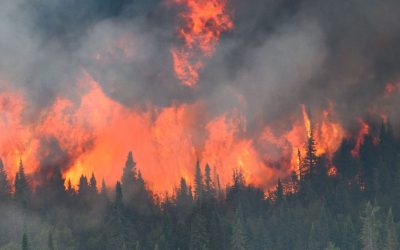Measuring a ‘global’ surface temperature
A solid record of the global temperature is essential for creating a sound record of temperature. This Frontier Charticle explores the methodology of recording an average temperature for the entire globe and discovers that the task is fraught with serious difficulties.
Winnipeg temperature –measurement depends
The first chart shows the difference between average readings for two locations in Winnipeg, the Forks (Downtown) and the International Airport. Positive values on the graph mean warmer temperatures at the Forks. Over an average year the Forks is roughly a 1.5 ۫ C warmer. This needn’t be a problem for measuring temperature changes, because even though the temperatures are different in different places, they can still show changes over time.
Global weather stations –Here today, gone tomorrow
The problem is that the stations measuring temperature in the past (the global temperature record goes back to 1860) are not necessarily the same ones used today. The Forks weather station is a case in point, having been established only recently, in 1999.
The second chart shows the trend for the number of weather stations used to record data from 1950-2000, and temperature measurements from the surface record over the same period. The co-incidence of less weather stations and higher recorded temperatures is striking.
Surely scientists have allowed for station changes?
Of course it is theoretically possible that changes in weather stations can be allowed for by scientists calculating the averages. They are certainly trying to do this but one way to measure the effectiveness of these attempts is to compare the surface record to other data.
The third chart shows a comparison of the surface record and other measurement techniques. Satellite data has only been available since 1979, but comparing the satellite measurements to the surface record, we see a clear deviation since the early 1990’s, the same time as half the world’s surface stations closed.
Conclusion
Despite all the claims of a consensus on climate science, there are serious question marks over even the most basic foundations of the science. One has to ask whether any decisive policy should be based on such indecisive findings.
Data Sources: Charts one and two constructed by the Frontier Centre from data obtained from Environment Canada and the website of Assoc. Prof. Ross McKitrick, respectively. Chart three produced by Dr Vincent Gray and previously published in Frontier Policy Series No. 7 “The Cause of Global Warming”
Read in PDF format here.



